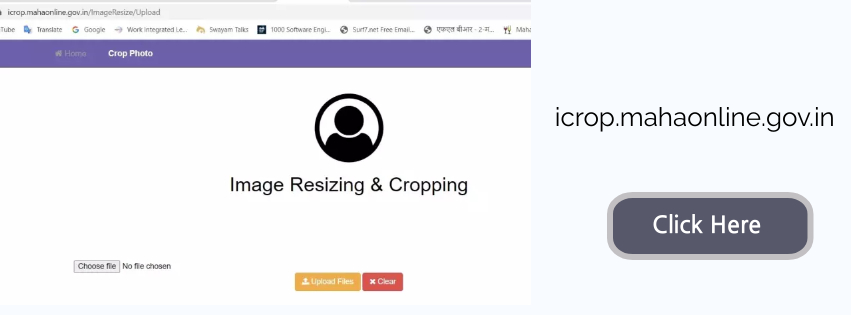Introduction: Welcome to our comprehensive guide on image resizing and cropping techniques. In today’s digital landscape, where visual content plays a pivotal role in engaging users, it is essential to optimize your images for both aesthetic appeal and search engine visibility. In this article, we will delve deep into the intricacies of image resizing and cropping, providing you with expert tips and best practices to help you outrank your competitors in Google search results.
Image Resizing & Cropping:

1. Understanding Image Resizing:
When it comes to optimizing images for your website, resizing plays a crucial role. Properly resized images ensure faster loading times, improved user experience, and enhanced mobile responsiveness. Here are some key considerations to keep in mind when resizing images:
- Aspect Ratio Preservation: Maintain the original aspect ratio of your images to prevent distortion. This ensures that the visual elements remain intact and visually pleasing.
- Resolution Optimization: Find the perfect balance between file size and image quality. Compress your images without compromising their clarity to reduce page load times.
- Responsive Design: Adapt your images to different screen sizes and devices, ensuring optimal display across desktops, tablets, and smartphones.
- Alt Tags: Include descriptive alt tags with relevant keywords to provide context to search engines and improve accessibility.
2. Mastering Image Cropping:

Cropping images strategically can significantly impact the visual appeal and overall user experience on your website. Here are some key tips to make the most out of image cropping:
- Focus on Relevance: Identify the focal point of an image and crop it accordingly to highlight the subject matter. This ensures that users’ attention is immediately drawn to the essential elements.
- Composition Enhancement: Use cropping to improve the overall composition of your images. Remove unnecessary distractions, adjust the framing, and create a visually pleasing balance within the frame.
- Emphasize Call-to-Action: If your image accompanies a call-to-action (CTA), crop it in a way that directs attention towards the desired action. Utilize leading lines or visual cues to guide users’ eyes toward the intended goal.
- Aspect Ratio Experimentation: Be willing to experiment with different aspect ratios to suit various platforms and layouts. For example, square or vertical images may perform better on social media platforms, while horizontal images may be more suitable for website banners.
What is the easiest and best way to get a passport-size photo online?



3. Optimizing Image Metadata:
Beyond resizing and cropping, optimizing image metadata can significantly impact your search engine rankings. Here are a few tips to make your images more discoverable:
- Descriptive Filenames: Rename your image files using relevant keywords, separated by hyphens, to provide search engines with valuable information.
- Alt Text Optimization: Craft concise, keyword-rich alt text that accurately describes the image content. This helps search engines understand the context and improves accessibility for visually impaired users.
- Image Sitemaps: Include your images in XML sitemaps to ensure proper indexing and crawling by search engine bots.
- Image Schema Markup: Implement structured data markup, such as Schema.org, to provide additional information about your images. This can enhance their visibility in search results and enable rich snippets.
4. Tools and Resources for Image Optimization:
To streamline your image resizing and cropping process, numerous tools and resources are available. Here are some popular options:
- Adobe Photoshop: The industry standard for image editing, providing advanced features and flexibility.
- GIMP (GNU Image Manipulation Program): A free and open-source alternative to Photoshop, offering powerful image editing capabilities.
- Kraken.io: An online tool for image optimization, offering compression and resizing functionalities.
- Canva: A user-friendly platform for image editing, resizing, and cropping
- Pixlr: A web-based image editing tool with resizing and cropping features, suitable for quick edits and adjustments.
- ImageOptim: A free software for Mac users that optimizes image files by reducing their size without sacrificing quality.
- TinyPNG: An online tool specifically designed for compressing PNG images while maintaining transparency.
- JPEGmini: An image optimization tool that reduces the file size of JPEG images without compromising their quality.
5. Best Practices for Image SEO:
To ensure your resized and cropped images contribute to your website’s overall SEO strategy, consider the following best practices:
- Keyword Optimization: Incorporate relevant keywords in the file names, alt text, and surrounding content to increase the chances of your images appearing in relevant search results.
- Responsive Design: Implement responsive design principles to ensure that your images adapt seamlessly to different devices and screen sizes.
- Page Load Speed: Optimize your images to minimize file size and improve page load times, as slow-loading pages can negatively impact user experience and search engine rankings.
- Mobile Friendliness: With the majority of internet users accessing websites through mobile devices, ensure that your images are mobile-friendly and load quickly on smartphones and tablets.
- User Engagement: Use visually appealing and relevant images that engage users and encourage them to explore further. High-quality images can contribute to lower bounce rates and increased time spent on your website.
- Social Sharing: Encourage social sharing of your images by adding social media sharing buttons to your pages. This can increase your visibility and generate valuable backlinks.
Conclusion:
In this comprehensive guide, we have explored the crucial aspects of image resizing and cropping for optimal results in search engine rankings. By implementing the best practices outlined here, you can enhance your website’s user experience, improve page load times, and increase your chances of outranking your competitors in Google search results. Remember to optimize your image metadata, experiment with different aspect ratios, and leverage the power of image SEO to boost your online visibility.
Passport size photo
One of the basic requirements for a document application is a correct size of a passport photo. Check what id photo size is needed for your document so that your application is guaranteed to be accepted.
Table of contents
- What is the correct size of a passport picture?
- How do I make sure my passport photo is of the correct size?
- What is a standard visa photo size?
- What is the passport photo size required in the U.S.?
- What is the easiest and best way to get a passport size photo online?
- How to correctly crop a photo to the passport size on your own?
- How to edit a passport photo with Visafoto
What is the correct size of a passport picture?
Refer to the detailed list of passport, visa and ID photos for each country for exact information and size of a particular photo.
The most commonly used passport photo dimensions in different countries are:
- USA, India: 2×2 inches or 600×600 pixels (at 300 DPI)
- UK, Europe, Australia, Singapore, Nigeria, Russia: 35×45 mm or 827×1063 pixels (at 600 DPI) or 413×531 pixels (at 300 DPI)
- Canada: 5×7 cm for passport and Canada visa is 35×45 mm (827×1063 pixels) like photos in Europe
- China: 354×472 – 420×560 pixels for online application and 33×48 mm for offline application
- Malaysia: 35×50 mm or 827×1181 (at 600 DPI) e-visa, passport
- UAE, Saudi Arabia, Oman, Kuwait, Bahrain: 4×6 cm, note many of these counties need a blue or grey background, so you need to select a specific country first from the list





